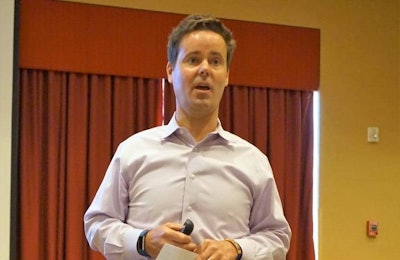
Chad Gregory, president and CEO of the United Egg Producers (UEP) discussed the industry shift to cage-free egg production at an area meeting in Des Moines, Iowa on August 28.
“We can’t speculate at this time when and how transition commitments will occur,” he said.
Based on producers’ trends and consumers demands a year ago, he explained how he thought the transition to cage-free was inevitable.
“Today, based on conversations with various industry stakeholders, I can no longer say that with certainty,” Gregory said.
Gregory explained that for a variety of legitimate reasons he did believe that the egg products industry was headed towards 100-percent cage-free production.
“The shell egg industry is a different story on housing and production. Whether shell egg production will transition or not simply is not predictable at this time. It’s going to be fascinating to see how that plays out over the next six to 10 years,” he said.
Companies such as Aramark, Compass Group, Nestle, 7-Eleven, Dollar General and many others are still committed to only using cage-free eggs by a future date no later than 2025.
USDA cage-free stats
USDA figures as of June 6 showed that there were about 40.2 million non-organic cage-free hens in the U.S. producing an estimated 11.2 billion eggs a year, according to the USDA. Those hens represent 12.5 percent of the non-organic table egg laying flock.
To meet the combined demand of all companies (restaurants, food distributors, hospitality, travel firms, grocery retailers, food manufacturers, etc.), it would take 225 million hens by 2026, assuming those hens each produced 279 eggs per hen per year.
Previous discussion on cage-free transition by 2025
This isn’t the first time a member of the UEP has expressed an opinion on whether the industry will be forced to go through with cage-free pledges. Larry Sadler, Ph.D., vice president of animal welfare for UEP, discussed the commitment of companies to sell cage-free eggs by a certain future date at the 2017 Live Production, Welfare and Biosecurity Convention, on September 19 in Nashville, Tennessee.
At the time of his speech, if committed companies were to keep their commitment, it was estimated to have cost industry producers $10 billion to convert housing systems currently used in the U.S. “This change may not be reasonable with only seven years to get there,” Sadler said at the time.
The numbers have since increased and would potentially cost the industry even more than the figure previously given by Sadler.

















